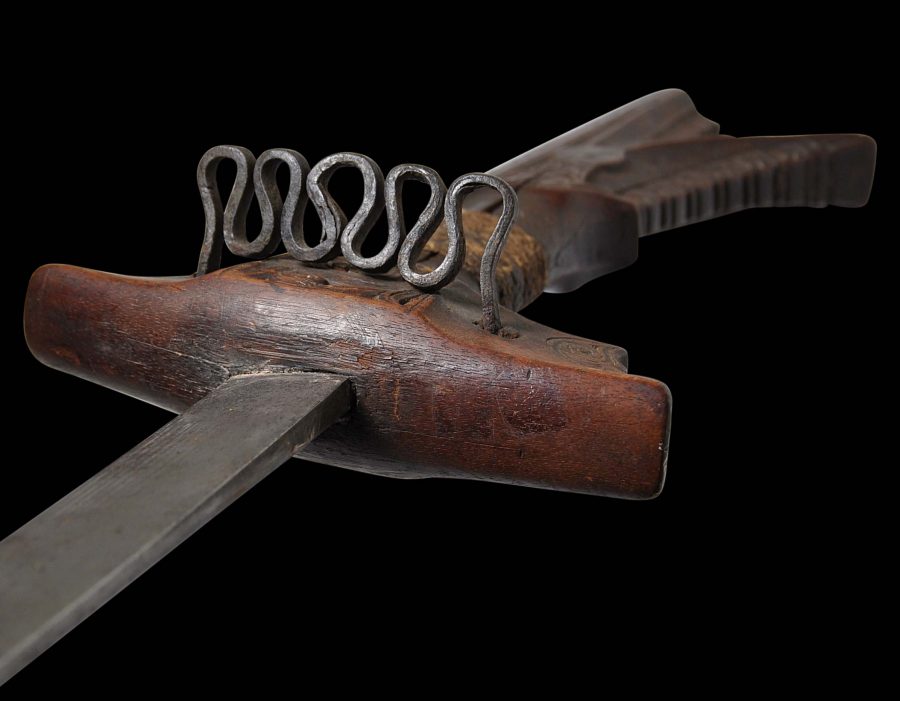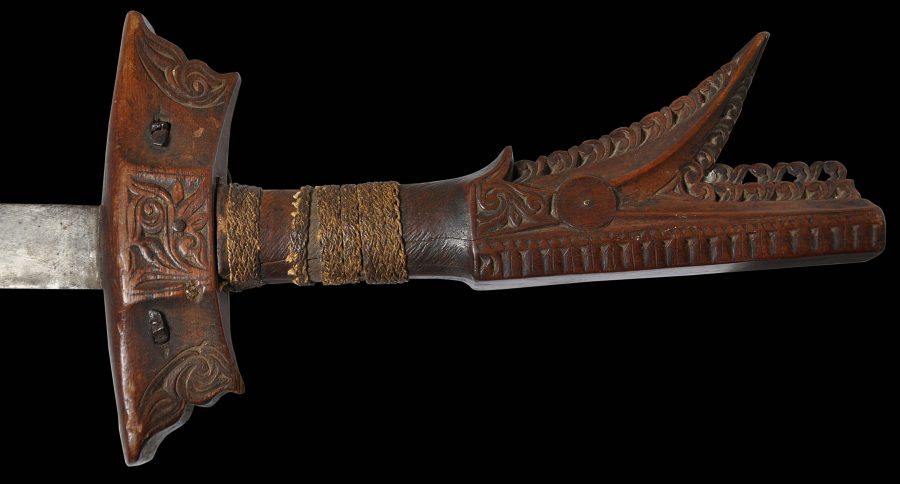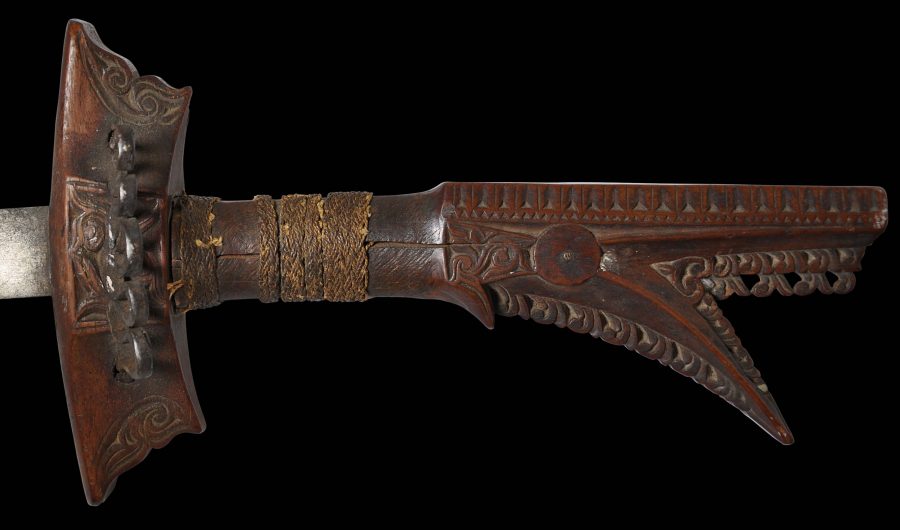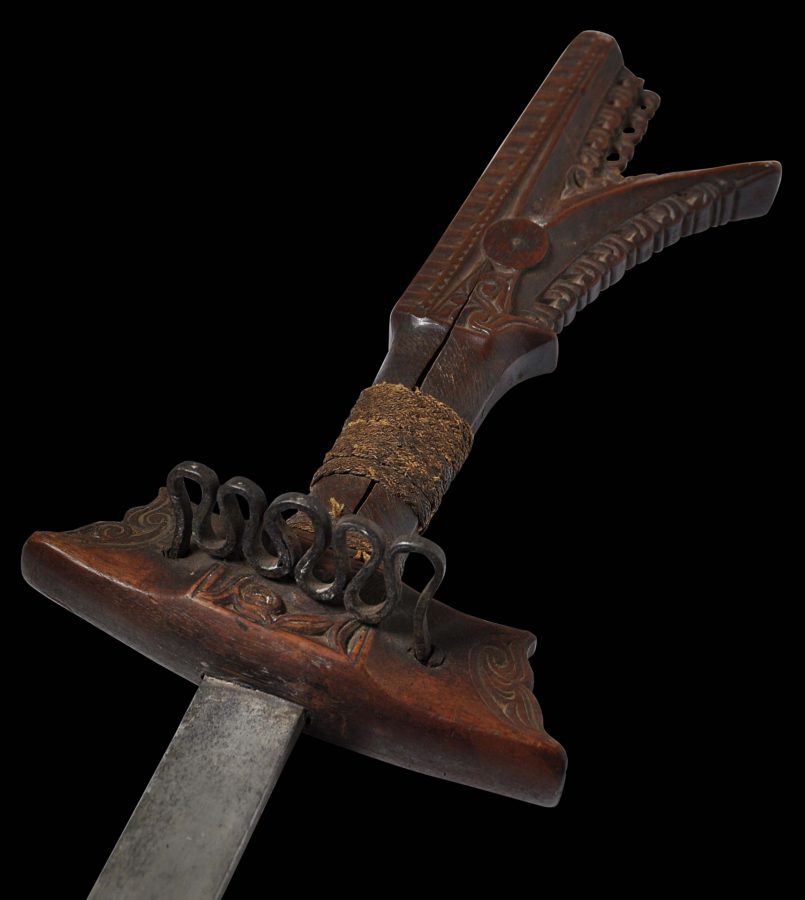This very long-bladed machete is known as a kampilan. It does not have a sheaf, and given its length it is likely that it was not intended to have one: removing a sheaf from such a long blade would be physically difficult even for a tall man.
It comprises long, single-edged steel blade, and a wooden hilt with a hand-guard unusually reinforced by a curling iron grid. The wooden cross-guard is carved with okir (‘leaf and vine’) motifs. The end of the hilt is carved and bifuricated and is probably intended to represent a stylised hornbill.
Plaited native twine has been wound around the grip.
The kampilan is a weapon mostly used by the Muslim Maguindanao people on Mindanao island.
The kampilan here has excellent patina: its significant age is clearly evident. There are some chips to the hilt and an old split on one side, but it is in a stable condition.
References
Barados, D., Land of the Morning: Treasures of the Philippines, San Francisco Craft & Folk Museum, 1995.
Casal, G. et al, The People and Art of the Philippines, UCLA Museum of Cultural History, 1981.







